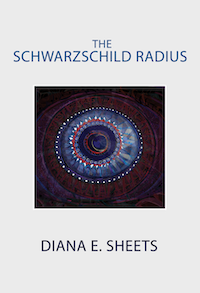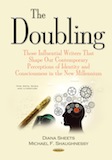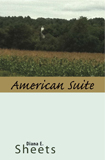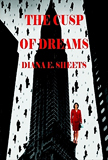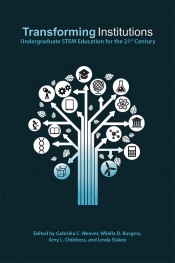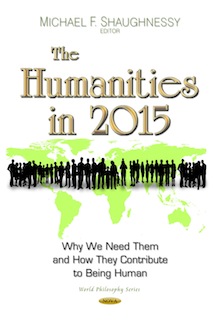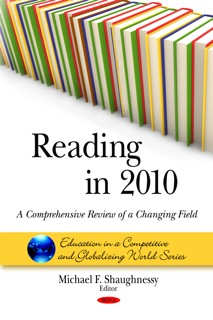Doris Lessing, Nobel Laureate, and the XX/YY Axis
Copyright © 2007 by Diana E. Sheets
The recent award of the 2007 Nobel Prize for fiction to Doris Lessing provides emotional validation to nearly two generations of female readers coming of age in the late fifties and early sixties and the decade that followed. They lived vicariously through her female characters, rebelling, as did Lessing, against their mothers, sharing the excitement of marriage and the thrill of motherhood only to break free—or imagining this departure—embarking on a sexual and spiritual odyssey with fellow travelers even as they struggled to pay the bills and their children grew up bereft of parental influence.
Of Lessing’s fiction, The Golden Notebook (1962) and The Four-Gated City (1969) are her two greatest creations. The Golden Notebook is more experimental in structure. The fractured story and timeline are conveyed by means of Anna Freeman Wulf’s notebooks: the black notebook, her writerly life; the red notebook, politics; the yellow notebook, stories derived from life experiences; and the blue notebook, diary entries and newspaper clippings. They are presented in four segments, each of which is preceded by portions of a self-contained serial novel, Free Women, which also provides the conclusion to the story. However, before this ending a fifth notebook is introduced, the golden notebook, in which Anna’s divided selves strive for mutual reconciliation, and she comes to understand the fallacy of attributing cannibalism to Saul (male) and victimization to herself (female). She realizes that if they lived together they would destroy each other. She must, therefore, accept her own cannibalism, namely, the inherently destructive qualities that reside in both women and men. (Claire Sprague, “Doubles Talk in The Golden Notebook,” Critical Essays on Doris Lessing, G.K. Hall & Co., 1986, pp. 52-8) The blurring of the gender divide is accentuated in the golden notebook when the writings of Anna and Saul merge into a collective identity as each begins the first line of the other’s novel, and his fictional story becomes embedded into her golden notebook. Or as Lessing noted, in her introduction to an English paperback reprint published in 1971, in the golden notebook their writing has become so entwined that we “can no longer distinguish between what is Saul and what is Anna, and between them and the other people in the book.” (“Doubles Talk in The Golden Notebook,” p. 45, 58. The interview also appeared in A Small Personal Voice edited by Paul Schlueter. Knopf, 1974)
For Lessing, Free Women is “an absolutely whole conventional novel, and the rest of the book is the material that went into making it.” (“A Talk with
As a story, Free Women presents two divorced women, Anna and Molly, living in
From a narrative perspective, The Four-Gated City is Lessing’s greatest novel. It is the last of a five-book series, The Children of Violence, that is considered to be the first bildungsroman featuring a woman’s consciousness as the driving force of a story—from menstruation to marriage to childbirth to childrearing to independence and finally, her demise in the aftermath of a nuclear holocaust at the close of the 20th century. (Clair Sprague and Virginia Tiger “Introduction”, Critical Essays on Doris Lessing, p. 5) The Four-Gated City begins with Martha’s arrival in
As with The Golden Notebook, there is psychological trauma that intersects with sexual freedom that veers into sexual dysfunction and gender strife. Martha, as with Anna, behaves as if she is a passive receptacle for the events that happen to her, whether social or economic or sexual. Madness and efforts toward therapeutic recovery are the electrical shocks that propel the novel’s interior landscape. The Four-Gated City is a conventional novel in structure until it explodes—literally and metaphorically—in the appendix, which chronicles, by means of fragmented records, the apocalypse and its aftermath, thereby catapulting the story into the realm of post-modern fiction.
Youthful readers now considering The Golden Notebook and The Four-Gated City might acknowledge the power of Lessing’s prose while failing to acknowledge the path-breaking nature of her fiction. Certainly, the pace of these stories, the passivity of the female characters, and the dearth of economic hustle signify that these stories are born of another era. Today’s urban women are accustomed to the marketplace—hunting for men, housing, and jobs. Many live alone, raise children out of wedlock, and map their lives along a self-trajectory. Consequently, the independence of Lessing’s female characters during the fifties and sixties barely merits a shrug from our contemporary women. But the therapy? The intensely time-consuming and financially draining experiential realizations achieved through months and months of sessions derived from the methodologies of R.D. Laing or Carl Jung are simply not recognizable to most women today. The quick-fix psychic remedies of our times have bred a generation reared on the benefits of cognitive therapy washed down with generous allotments of Selective Serotonin Reuptake Inhibitors. These days, who has the leisure to embrace a complete breakdown? The frenetic pace of life, the demands of the workplace, and the limits of the paycheck dictate the approach and the solution to our mental distress.
However, Lessing’s examination of the gender divide retains considerable currency today. For this reason, let us consider her allegorical sci-fi The Marriages between Zone Three, Four, and Five. It is the second of five novels in the series of Canopus in Argos: Archives. The Canopean Providers have ordered the marriage of Al•Ith, Queen of Zone Three, to Ben Ata, the ruler of the more primitive Zone Four. Zone Three is an agrarian society situated on a high plateau, bounded by snowcapped mountains and ravines. It is matriarchal, guided by the sagacity of the “Mothers.” Queen Al•Ith has five children and is the spiritual mother of fifty orphans. Though Queen, she makes no distinction between herself and her subjects. This is an egalitarian kingdom, a serene place that knows no enemies, harbors no jealousy, expresses no anger, witnesses no violence, and permits no beasts of burden.
Zone Three is a nurturing environment in which the gender differences between men and women have been eradicated. Men, though they exist, are remarkably similar to women. They are sympathetic; they understand. They are generous, kind, and supportive, able to communicate with empathy. Everyone is united in purpose. Sex is by mutual consent. There are no exclusive relationships. There are Gene-Fathers and Mind-Fathers and Gene-Mothers and the women who care for the children. All are joint-parents, all engage in nurturing. Children are the center of this feminized universe, a domain that has excised pain.
In Zone Three, knowledge is the basis for understanding. Everything is interconnected. No one is blamed since here is a collectivity that functions as one. It is a familial sphere of social relationships that has no external reference. The need, the desire, the passion to possess, to know that which is not understood, to venture beyond the bounds of what seems knowable, that state that for want of a better word we shall refer to here as “aggression” does not exist in this realm. No one has bothered to look up to Zone Two. Nor has anyone even considered Zone One. Dare we say it? Lessing leaves the reader with no ambiguity: Here is a dying civilization.
Who would have guessed that in 1980, with the publication of The Marriages Between Zones Three, Four, and Five, that Doris Lessing would have so aptly predicted the dismal state of literary fiction today? Namely, a domain for feminized readers who yearn for a pastoral universe of caring individuals where the differences between men and women have been annihilated. In this Shangri-La we refer to as literary fiction, injustice is obliterated. Carnage and evil and everything associated with an external reality beyond Zone Three do not merit consideration. Violence is metaphysical. Physics and mathematics have no relevance. Laws of supply and demand do not exist. What matters is VIRTUE. And that VIRTUE has at its embryonic core the fate of children. Literary fiction is a sanctified and domesticated realm that need have no external reference.
Back to Lessing’s story. The Canopean Providers have ordered Queen Al•Ith to descend to Zone Four, a more primitive zone where she is to marry the King, Ben Ata, and bear him a child. If Zone Three is matriarchal, Zone Four is patriarchal and hierarchical, a warrior state in which feminine virtues are limited to cunning, deception, and sexual prowess. Men are powerful. Women are submissive. There is rape and conquest and the army is forever at war with Zone Five. In Zone Four, the citizenry never look up to the skies: it is forbidden. The landscape is essentially flat. The solders have come to fear heights. Those who violate the law to glance at the heavens are ordered to secure heavy weights to their heads. It is a society in which humans and animals no longer bear offspring. And it is here that Queen Al•Ith has been sent.
In our literary world today, we have arrived at exactly this juncture. There is no “juice” nurturing the creation of path-breaking fiction. Nominally, it is all about love and children or the pain associated with this domesticated realm in which ideas and intellect have been excised in favor of emotions. Consider Ann Packer’s Songs Without Words, (Knopf, 2007). Publishers Weekly has characterized it as “a richly nuanced meditation on the place of friendship in women’s lives.” Or as Carrie Brown noted in her review for The Washington Post’s Book World, “Packer has tapped into the things that worry many of these readers: love and satisfaction in their relationships, the emotional and psychological health of their offspring, the terrible possibility of spiritual and familial dissolution.” Or consider Alice Sebold’s The Lovely Bones (Little, Brown & Company, 2002), a novel about Susie Salmon, a raped and murdered fourteen year-old girl—those atavistic YY impulses!—who ascends to heaven from whence she looks down upon the lives of friends and family, providing the reader with ruminations of hope, joy, and redemption set against horrific tragedy and loss. This is the domain of literary fiction. Of adolescence, of feminine virtues, a XX Zone that decries the brutish impulses of the YY even as it celebrates XX VIRTUE. As a consequence, it is internalized, feminized, and dying.
Which brings us back again to Lessing’s The Marriages Between Zones Three, Four and Five. The story has as its premise that the cosmic order is ideally realized when men and women cross the gender divide and attempt genuine communication—sexually, emotionally, and through daily contact, thereby setting the preconditions for the attainment of enlightened consciousness. It’s never easy; it’s far from fully realized, but engagement across the gender divide profoundly alters perspectives and potentials. New possibilities abound. Domains that were beyond comprehension are now visible and potentially within reach. In The Marriages of Zones Three, Four and Five, Queen Al•Ith returns to her Zone Three intent on approaching Zone Two and entering its realm. Ben Alta, at the bequest of the Canopean Providers, marries the Barbarian Queen Vahshi of Zone Five. This union brings change. Threats of military warfare between the two zones are curtailed, and vibrant economic opportunities ensue. Meanwhile, the inhabitants of Zone Four are now looking to the Heavens. Houses are being built. Cast differences are diminishing. A select group of women from Zone Four begins visiting Zone Three. The Marriages Between Zones Three, Four and Five concludes with the continuous movement of inhabitants between Zones Five and Four and Zones Four and Three, as well as those individuals in the upper echelons. There is lightness, a renewed vitality, and a remapping of the cosmic order.
Would that this were the case in the XX/YY Axis that we refer to today as literary fiction.


